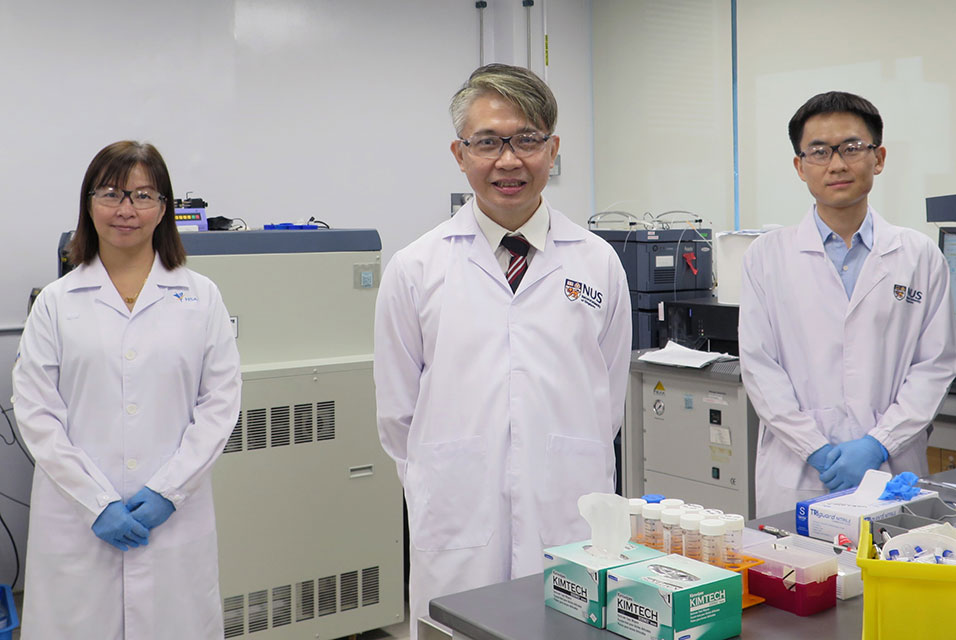SINGAPORE.- A team of scientists from the
National University of Singapore has successfully identified the urinary biomarkers of an emerging subclass of synthetic cannabinoids, called OXIZID, to monitor potential abuse. OXIZIDs were the new synthetic cannabinoids identified in Singapore in 2021.
In the past decade, the abuse of new psychoactive substances, particularly synthetic cannabinoids, has posed a significant risk to public health. The emergence of these synthetic cannabinoids has also posed a challenge to drug policy. Although governments have imposed legislative bans on these substances, illicit manufacturers have produced novel synthetic cannabinoids to evade forensic detection. One of these is OXIZID, which has a unique molecular scaffold and is unregulated by existing laws which results in potential abuse.
Synthetic cannabinoid consumption is often identified via the detection of biomarkers in urine. These biomarkers are often metabolites of the original synthetic cannabinoid consumed, as these cannabinoids are known for their rapid and extensive metabolism in the human body. Little is known about the metabolite profiles of OXIZID, and their associated biomarkers have not been established yet. This poses a challenge to forensic toxicologists in their attempts to identify OXIZID abusers.
A research team led by Professor Eric Chan from the NUS Department of Pharmacy has collaborated with the Analytical Toxicology Laboratory of Singapore’s Health Sciences Authority (HSA) to investigate the key metabolic properties and identify urinary biomarkers of four OXIZID analogues, specifically BZO-HEXOXIZID, BZO-POXIZID, 5F-BZO-POXIZID and BZO-CHMOXIZID. These analogues were selected as they were identified both in Singapore and worldwide.
The team built on their previously developed research methodology, which couples in vitro biosynthesis of OXIZID metabolites with a comparison and analysis of anonymised urine samples from suspected drug users.
Their findings were published in Clinical Chemistry on 30 September 2022.
Identifying metabolites to detect OXIZID consumption
In order to identify the specific metabolites suitable for detecting consumption of the OXIZID analogues, the team started by identifying 12-16 major metabolites of each of the four OXIZID analogues. They then narrowed down the selection to three metabolites which could serve as reference urinary biomarkers to detect OXIZID consumption. The metabolites were identified due to them being unique markers found in high abundance in urine samples following OXIZID consumption.
The identification of the three new metabolites will facilitate work by drug enforcement agencies worldwide in monitoring OXIZID abuse. In addition, the NUS team has also determined critical enzymes responsible for major metabolic pathways involved in the rapid metabolism of OXIZIDs. These findings can facilitate the greater understanding of the toxicological implications of OXIZID consumption. This could help predict metabolite profiles of new synthetic cannabinoids with similar core structure as well as drug interactions between OXIZIDs and other illicit drugs or medications.
“In collaboration with HSA, our laboratory has been conducting timely research to establish urinary biomarkers for diagnosing the illicit use of emerging synthetic cannabinoids globally. Our work is a testimony of the importance of multi-disciplinary research, specifically in forensic and pharmaceutical sciences, in developing innovative solutions to solve real-world problems,” said Prof Chan.
Application and next steps
HSA has applied the research findings in routine analysis to monitor OXIZID consumption in Singapore. The team intends to continue their analytical approaches to tackle future emerging synthetic cannabinoids.










